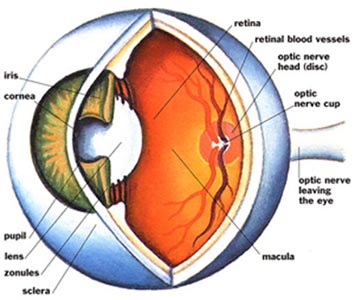Eye cells deemed to be retinal stem cells are actually normal adult cells
 Washington, March 31 : Researchers at St. Jude Children''s Research Hospital have found that eye cells believed to be retinal stem cells are actually normal adult cells, and thus therapies to restore vision in people with retinal degeneration should involve other types of stem cells.
Washington, March 31 : Researchers at St. Jude Children''s Research Hospital have found that eye cells believed to be retinal stem cells are actually normal adult cells, and thus therapies to restore vision in people with retinal degeneration should involve other types of stem cells.
Scientists have always believed that retinal stem cells may form the basis for treatments to restore sight to millions of people with blindness caused by retinal degeneration, provided they can be obtained.
The current study suggests that scientists researching into cell therapies to restore blindness better not concentrate on the eye cells previously believed to be retinal stem cells.
The St. Jude researchers say that more promising is research aimed at re-engineering stem cells to develop into the light-sensitive photoreceptor cells that are lost as a result of retinal degeneration, as such studies may lead to implantation of engineered photoreceptor cells into the eye to restore sight.
Dr. Michael Dyer, a member of the St. Jude Department of Developmental Neurobiology, points out that it was reported in 2000 that the layer of ciliary epithelial cells lining the inside of the eye contains retinal stem cells because, when grown in culture dishes, these cells formed tiny spheres of about a thousand cells.
He says that such spheres could be cultured to give rise to more spheres, reminiscent of the self-renewing capability of stem cells.
The researcher also underscores the observation that the cultured sphere cells showed activation of genes characteristic of adult eye cells.
"The first clue that these cells were not stem cells was that they were pigmented. Neural stem cells, in general, and retinal progenitor cells, in particular, are not pigmented. Nevertheless, the previous finding was met with a tremendous amount of enthusiasm because of the promise of introducing these cells into the eye to regenerate photoreceptors lost to blindness," Dyer said.
During the study, Dyer's team analysed the sphere-forming cells in detail to find out whether they were really retinal stem cells.
The researchers painstakingly studied each cell in the spheres, and found that all of them were pigmented and had features of ciliary epithelial cells.
Dyer and his colleagues later compared the structure of the sphere-forming cells with those of confirmed stem cells and other immature cells in the developing retina called progenitor cells.
They found fundamental differences between the sphere-forming cells and established stem or progenitor cells.
The team also found that simply culturing the sphere-forming cells in the same growth medium, as is used for stem cells, caused them to activate genes characteristic of stem cells, yet remain adult ciliary epithelial cells.
Dyer said that a particularly promising alternative was the possibility of taking samples of adult cells-such as fibroblasts that form connective tissue-from a patient with retinal degeneration and exposing them to genetic cues that induce them to revert to stem cells.
The researcher believes that such induced pluripotent stem cells may later be manipulated to develop into light-sensing photoreceptor cells that could then be transplanted into the patient''s eyes to restore vision.
"This approach would solve many problems of developing cell-based therapy for blindness," Dyer said.
"First, these cells are immortal, so they can be grown indefinitely to produce large amounts of cells for treatment. And secondly, they would be immunologically matched to the patient, so there would be no danger of rejection. And thanks to some excellent research during the past 15 years, we know a lot about how to reprogram such stem cells to make them into photoreceptors," he added.
The study has been published in online edition of the Proceedings of the National Academy of Sciences. (ANI)